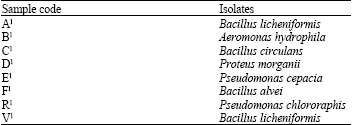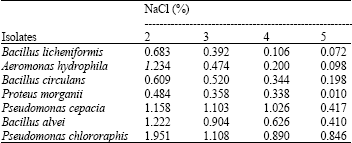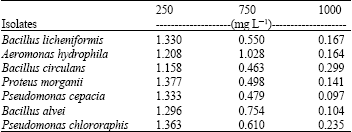Research Article
The Effect of pH and Chemical Preservatives on the Growth of Bacterial Isolates from Some Nigerian Packaged Fruit Juices
Deparmtnetof Science Laboratory Technology
D. T. Adeleke
Deparmtnetof Science Laboratory Technology
A. O. Adebiyi
Department of Pure and Applied Biology, Ladoke Akintola University of Technology, P.M.B. 4000, Ogbomoso, Nigeria













